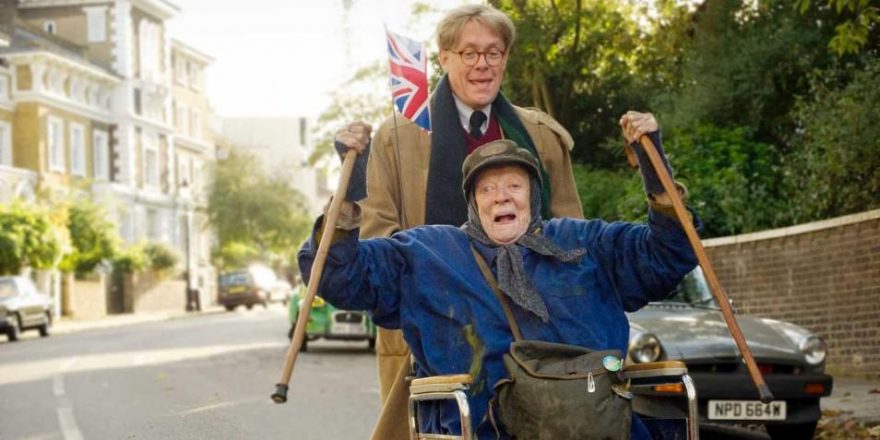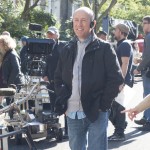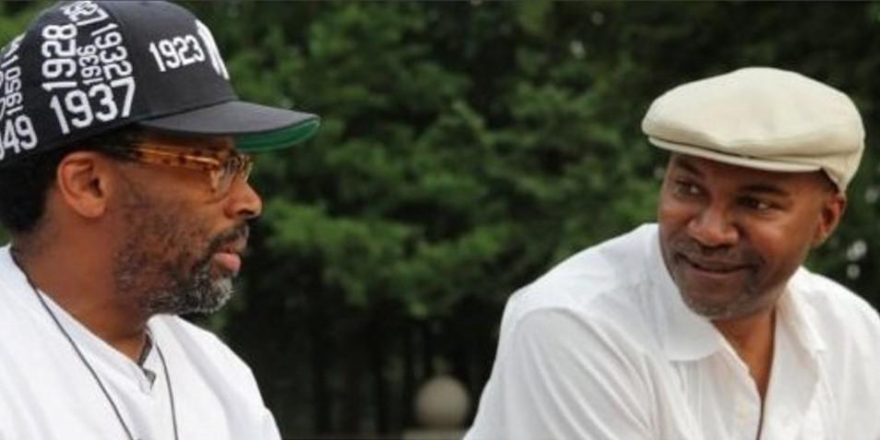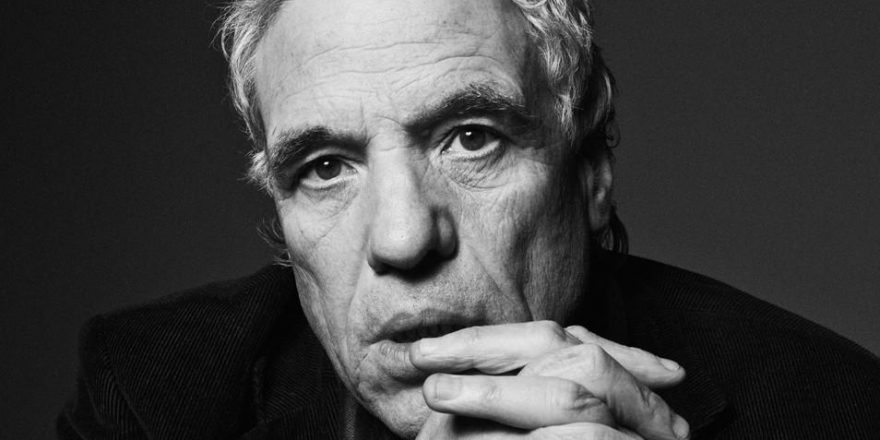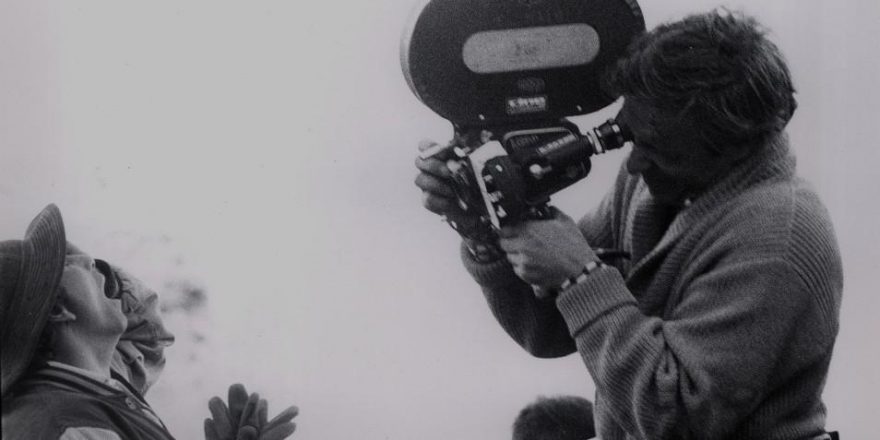The following, which appears as the foreword in The Lady in the Van: The Screenplay, is exclusively reprinted here by kind permission of the author. – N.D.
I first went to Alan Bennett’s house, where this happened and where it was filmed, in the autumn of 1989, a few months after Miss Shepherd died. I was there to discuss what would turn out to be the start of a 25-year collaboration that has included seven plays, three movies, and so many on-stage discussions that my questions and his answers now have the inevitability of a catechism. They almost always include the story of the lady who drove her van into his front garden and stayed for 15 years.
I’d seen her around. After I moved to Camden in the early ’80s, I used to take the detour round Gloucester Crescent on my way to the High Street, mainly to try to work out which creative titan lived where. The Crescent was home to any number of writers, film and theatre directors, publishers, journalists and artists; and although I discovered that Alan lived at 23, I had no idea what the yellow van was about. I wondered whether the derelict old lady who appeared to live in it was his mother, which had I ever got close enough to smell her would have seemed even more far-fetched than it was from a safe distance. I didn’t think to ask about her when I finally arrived in the study (nor, it turned out, did most of the people who visited the house when she was in the drive), and I only realised what I’d missed when Alan finally wrote about her in the London Review of Books.
He insisted then, and continues to insist, that there was nothing remarkable – and certainly nothing kind – about what strikes everyone else as 15 years of extreme self-sacrifice. “She didn’t really impinge,” he said at a preliminary read-through of the screenplay. We were sceptical, but said nothing. As the shoot progressed, and we confronted the daily reality of staging the action, we could – if we needed more room for the camera – move the van out of the way. This was not an option available to the householder when the real van occupied the entire space between his front door and the street. “She didn’t impinge?” said Maggie Smith, every time she had to squeeze past her mobile home. “Impinge?”
She obviously did, and not only on Alan’s life. Many of the residents of Gloucester Crescent have been there for decades, and shuddered in horror as our van (there were actually four of them) made its ghostly reappearance. Although there was an element of Rashomon about their various versions of her, there was no disagreement about the smell, or about the incongruity of her residence in their oasis of cultured serenity.
I’ve worked often enough with Alan to share his relish for the kind of single-minded oddball who disrupts the serene certainties of the English. Mad King George at Windsor, shambolic Hector performing his vaudeville turns for the History Boys in their Sheffield grammar school, WH Auden offering blow jobs to visitors to his Oxford rooms, Toad careering around in fast cars and causing grief to his steadfast riverbank friends (which is where Alan and I started) all turn their environments upside down by refusing to play by the rules. Miss Shepherd stands out even in this company, and had the added distinction of challenging the self-satisfactions of her host’s own tribe (and mine). She shared with Margaret Thatcher the ability to enrage, to great comic effect, the North London liberals amongst whom she set up home – though it has to be said that many of the residents of Gloucester Crescent were charity itself to their unwashed neighbour, and reserved their contempt for Mrs. Thatcher, whose politics were nevertheless some way to the left of Miss Shepherd’s.
But if it still seems hard to imagine that you might import Miss Shepherd’s particular brand of chaos onto your own front doorstep, the view from the study window helped me understand how Alan survived. I’d sat with him there often enough over the years, but it was only when the van was in situ that I started to get some sense of it as it must have been to the writer who sat at the desk, looking at it. Alan owns up in the film to stealing one of his best lines from Proust. Maybe it goes further than that. As Proust looks out from his apartment to the Hôtel of the Guermantes, and turns the fashionable comings and goings into art, so Alan looks at the van. And for the part of him that never leaves the study, the activity in and around the van is there not to be suffered, but to be recorded.
The truest part of what we bill as A True Story is the view of Alan Bennett at the desk watching the view of Alan Bennett dealing with the mess spilling out of the van. In early drafts, Bennett the writer popped up all over Camden, a constant source of commentary. Even the final draft sent him, on occasion, into the Crescent to witness his alter ego’s latest humiliation. But as we started to shoot, it became clear that the telling of the story is controlled from the desk. The film emerges from the typewriter; so the writer stays in the study, and only appears in the outside world after Miss Shepherd is dead, when he allows her to take over authorship of her own ending. I hope the movie is as much about how a writer writes, and why he chooses what to write about, as it is about his subject.
It is also about what a writer must do with what happens in front of his nose to turn it into a story worth telling. Always scrupulous about any departure from the historical record (I was the guilty party whenever The Madness of King George messed with the facts, which wasn’t often), Alan has written into the screenplay not just his gradual and reluctant recognition that his best subject was living on his doorstep, but his struggle to tell her story without occasionally inventing it. His intuitions about her inner life, based on information he discovered after her death, are matched by discoveries about his own: that “you don’t put yourself into what your write – you find yourself there.”
That thought appeared first in Alan’s autobiographical play Cocktail Sticks, and it was Alex Jennings’ performance as Alan Bennett in that play – more authoritative and more revealing than the author’s as himself – that brought us back to The Lady in the Van, which we’d staged with Maggie Smith as Miss Shepherd in 1999. It was the only one of the shows we’ve made together that didn’t open at the National Theatre (it was produced by Robert Fox in the West End). His subsequent plays became the backbone of the National’s repertoire during my 12 years as its Director, and virtually every one of the actors in the film were regular company members during that time – though Maggie herself, to my eternal regret, returned only for a gala celebration of the National’s 50th birthday.
Maggie was one of the glories of Laurence Olivier’s unmatched National Theatre company when it started life at the Old Vic. During its first year, she played in repertoire Desdemona to Olivier’s Othello and Myra in Noel Coward’s own production of Hay Fever; and in the 50 years since, she has continued to command with equal mastery the tragic and comic heights. Miss Shepherd allows her the opportunity to scale both in the same film.
Maggie’s presence on a set or in a rehearsal room is exhilarating. She’s smarter than everybody else, and sniffs out pretension before it’s even come round the corner and said hello. There is nothing she can’t do – at more than one point in the film, even stretching her portrayal of Miss Shepherd to include the suggestion that she is simultaneously playing what actually happened and what the writer would have preferred to happen. She is demanding above all of herself, always electrifying when the scene asks most of her. She was hardest on herself during the scene where Miss Shepherd plays the piano in the day centre, despite allowing the camera devastating access to an old woman confronting the end of a life she knows she’s thrown away.
This film brings together again three of the team that made The Madness of King George, and to whom I owe most of what I know about filmmaking. King George was shot on 35mm film by Andrew Dunn, and cut on a Steenbeck editing machine by Tariq Anwar. Twenty years on, they are still my tutors – not least in the possibilities offered by the new digital world, amongst which was the (nearly) effortless splitting in two of Alan Bennett. George Fenton, who arranged Handel for King George, here composes a score almost entirely his own, and appears as the conductor of Margaret Fairchild’s performance of Chopin’s First Piano Concerto. He was the only one of us, apart from Alan himself, who actually knew Miss Shepherd, as he’s been a regular visitor to 23, Gloucester Crescent since he was a young actor in Alan’s first play. His music is infinitely more vivid than his memory: you don’t get much more from him about her than a rueful laugh. The director Stephen Frears, a sometime resident of the Crescent, was more forthcoming. He passed by one day and asked what we were up to. “Well I won’t be paying money to see that,” he said firmly, after we’d told him. “I knew the real thing. You’d be better off making a film about Goebbels.”
To the current residents of Gloucester Crescent I can only offer my thanks. They tolerated the considerable intrusion of a film unit with great good humour, and for several weeks weren’t even allowed to park their own cars outside their houses. They permitted us to make a film that shows to a rare degree exactly how it was, where it actually happened. Occasionally, and inevitably, life imitated art. I arrived early one Monday morning to find the art department hurriedly evacuating the van of its contents. It had been left in the drive over the weekend, and a couple of drunks from Camden Town had set up temporary home in it. Miss Shepherd’s apparently filthy furnishings were now genuinely filthy. “Don’t tell Maggie! Don’t tell Maggie!” they cried as they took the dirty mattresses away to be deep cleaned then made fake-filthy all over again. So I made up some elaborate story about why we needed to shoot something else before we shot whatever it was that needed her to climb into the van, and I didn’t own up to her until six months later.
Alan doesn’t live at 23, Gloucester Crescent any more, though when we made the film he still owned it. The emerald and gold plaster walls of the study are not the invention of a production designer: the room is unchanged, precisely as it was when he worked there. It’s the room where I talked to him about The Madness of King George, The History Boys and The Habit of Art as well as The Lady in the Van. Though I was never there for very long, as our working relationship is based less on conversation than on a back and forth of draft after draft, each of them incontinently annotated with my notes and suggestions. These many drafts have ended up in the Bodleian Library in Oxford, to which Alan gifted his entire archive. Future scholars, however, will be less interested in my annotations than in the collected writings of Miss Mary Shepherd. Her pamphlets, her scrawled notes, even her shopping lists were carefully preserved by her landlord and now share the shelves with the First Folio, the Guttenberg Bible and the original conducting score of Handel’s Messiah. This movie is only one of the consequences of her posthumous fame.



